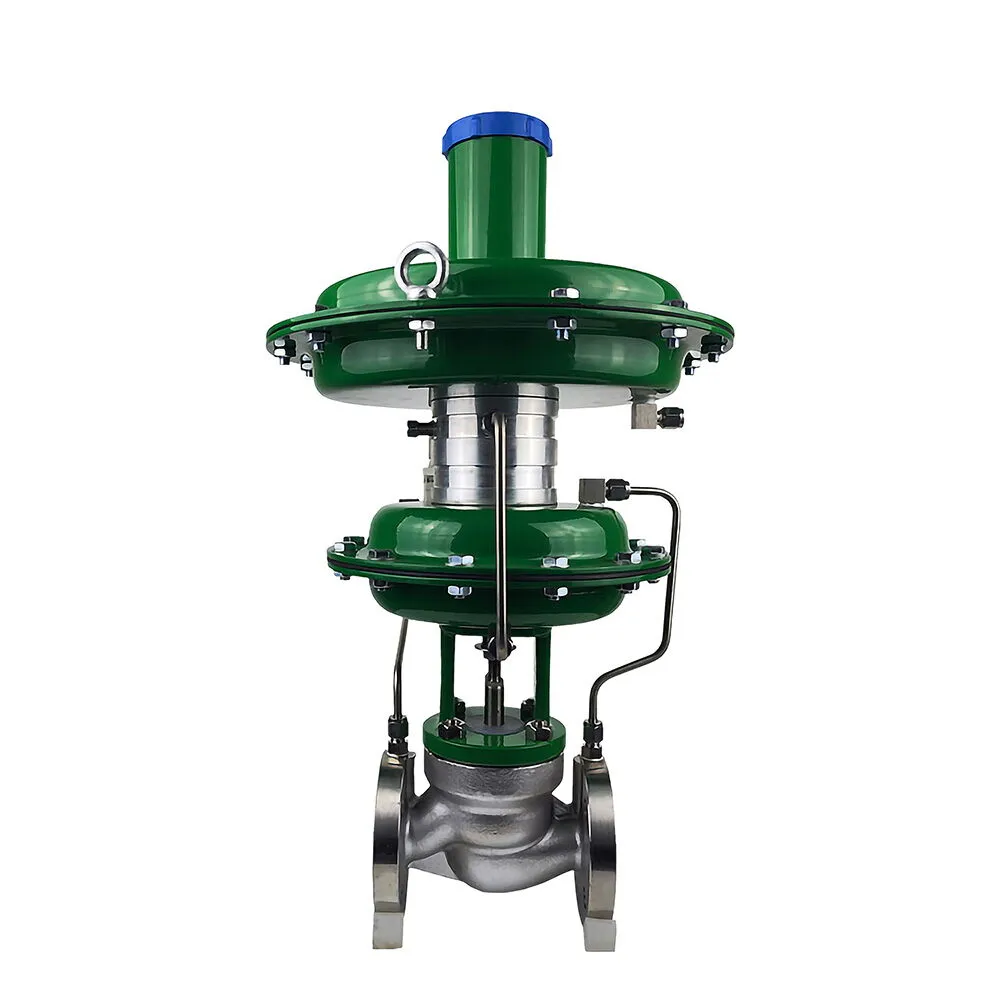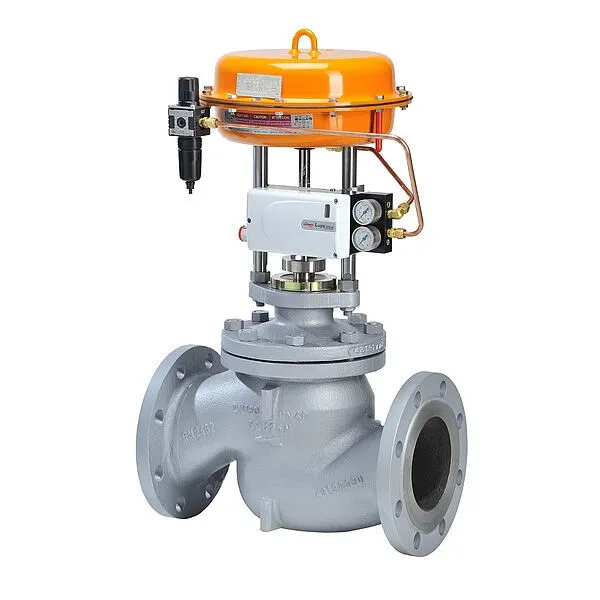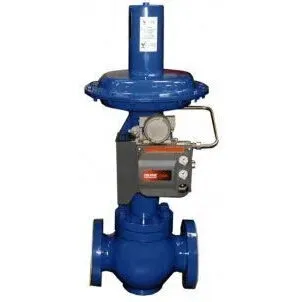Product Name: Self-Operated Nitrogen Sealing Control Valve
Size Range: 1/2 Inch, 3/4 Inch, 1 Inch, 2 Inch, 3 Inch, 4 Inch, 5 Inch, 6 Inch, 8 Inch, 10 Inch, 12 Inch
Pressure Range: Class 150 LB, 300 LB, 400 LB
Material: Stainless Steel, SS 304/SS 306, Carbon Steel, ASTM A216 WCB
The self-operated nitrogen sealing valve is primarily used to maintain a constant nitrogen pressure at the top of the storage tank, protecting the materials inside from oxidation and ensuring the safety of the tank. The pressure regulating valve, equipped with a controller, is composed of two main components: a quick-release valve and a self-operated micro pressure regulating valve. The quick-release valve includes a pressure controller and a single-seat shut-off valve.
Working principle: When the pressure inside the storage tank rises to the set value, the quick-release valve quickly opens to release the excess pressure. When the pressure inside the tank decreases, the micro pressure regulating valve opens, allowing nitrogen gas to fill the tank. Since the micro pressure regulating valve must operate at a pressure below 0.1 MPa and the on-site pressure is typically higher, a pressure reducing valve is required to lower the pressure below 0.1 MPa before use. The nominal pressure of the valve is 0.1 MPa, and the pressure can be adjusted in stages, ranging from 0.5 kPa to below 66 kPa. The medium temperature is 80°C.
Advantages of Self-Operated Nitrogen Sealing Valves
• Autonomous Functioning: These valves operate independently, requiring no external power or sophisticated control systems. They utilize the pressure of the nitrogen gas itself to regulate flow rates and maintain sealing pressure, reducing dependence on external infrastructure and boosting system reliability.
• Enhanced Efficiency: By automatically adjusting the flow rate in response to changes in sealing pressure, these valves optimize nitrogen consumption, leading to lower operational costs and improved sustainability.
• High Reliability: With their sturdy design and self-regulating operation, self-operated nitrogen sealing valves deliver consistent performance under diverse operating conditions, ensuring reliable seal pressure and maintaining system integrity.
• Adaptability: These valves are highly versatile and can be tailored to suit specific application needs, making them ideal for a wide range of sealing tasks across different industries.
Applications of Self-Operated Nitrogen Sealing Valves
• Chemical Processing: In chemical production and processing facilities, these valves are essential for creating inert atmospheres within storage tanks, reactors, and other equipment, effectively preventing oxidation, contamination, and hazardous chemical reactions.
• Food and Beverage Industry: These valves are used to maintain a nitrogen blanket over liquids during storage and packaging in the food and beverage sector, thereby inhibiting spoilage, oxidation, and the growth of microbes.
• Pharmaceutical Manufacturing: In pharmaceutical plants, self-operated nitrogen sealing valves are crucial for maintaining sterile conditions in processing equipment and storage vessels, which is vital for ensuring the purity and stability of pharmaceutical products.
• Electronics Manufacturing: In the production of semiconductors and electronic components, these valves play a pivotal role in preventing moisture and oxygen from entering during assembly and packaging, thus protecting sensitive electronic parts and devices.




